The verdict: The price tag is steep, but the RS 7 has the performance, style and luxury to match.
Versus the competition: As is often the case, this Audi goes toe-to-toe with its German luxury competitors — at a more affordable price than some of them.
I'll admit I pre-judged the 2017 Audi RS 7 when I looked at its price tag. The highest-performance version of Audi's stylish A7, it starts at $111,650 — a lot of scratch. Things escalated quickly from there in my test vehicle, which was an RS 7 Performance, a new trim level for 2017.
The RS 7 Performance adds more horsepower, suspension upgrades and larger wheels … for a cool $130,450, including destination charge. Add a few more safety options and a black Alcantara headliner, and the final sticker was $136,975.
This puts the RS 7 in rarified air competing against other high-performance, four-door luxury vehicles like the BMW M6 Gran Coupe, Porsche Panamera and Mercedes-AMG CLS63. Compare the RS 7 with those vehicles here and with last year's model here.
To justify its price, the RS 7 has to deliver both performance and luxury, and it does — in excess.
Exterior
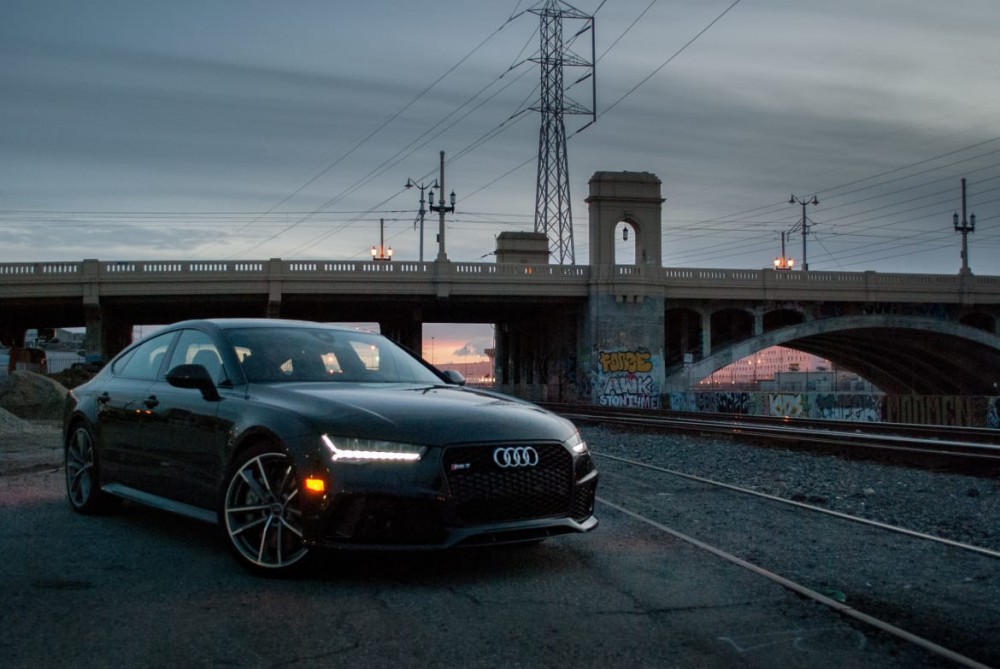
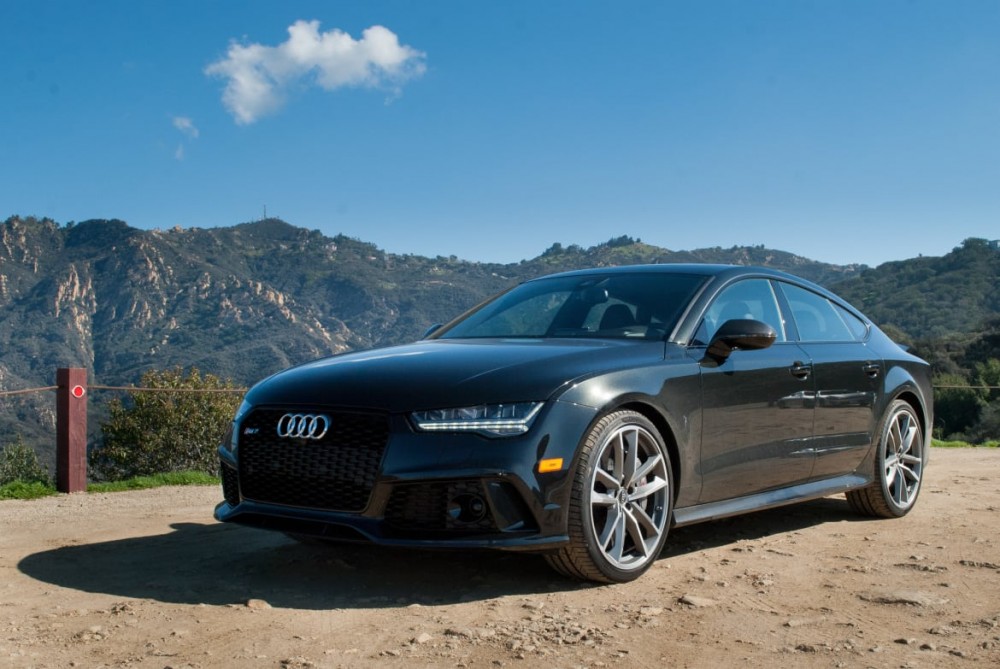
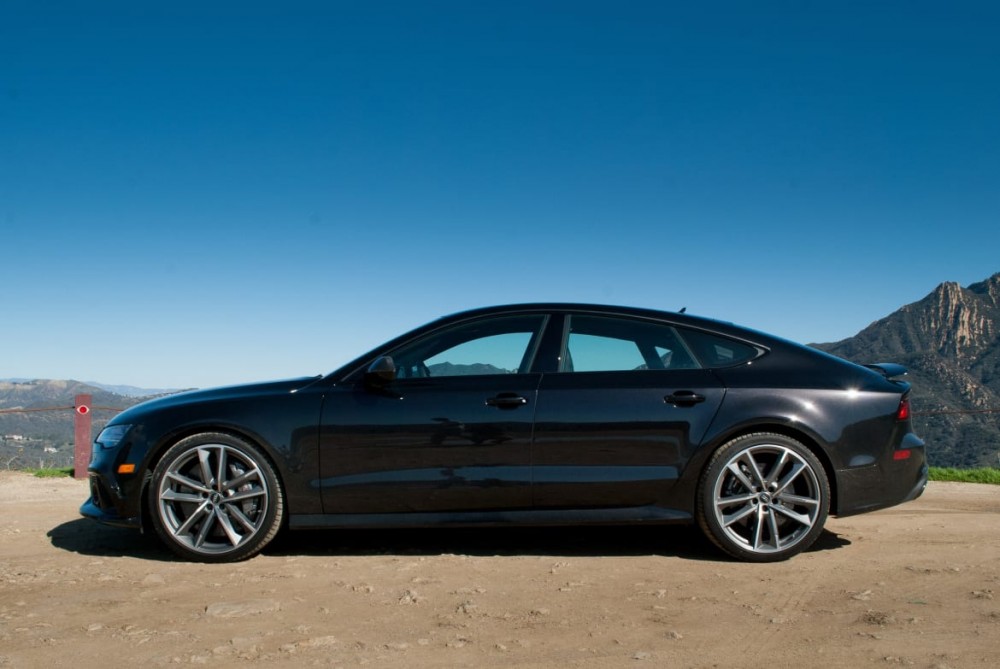
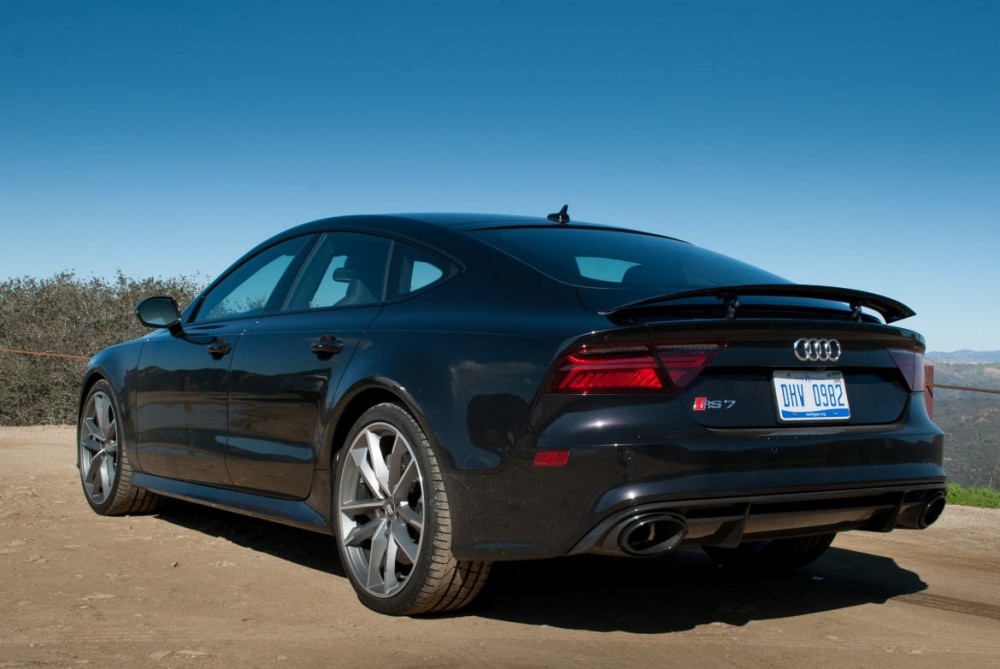
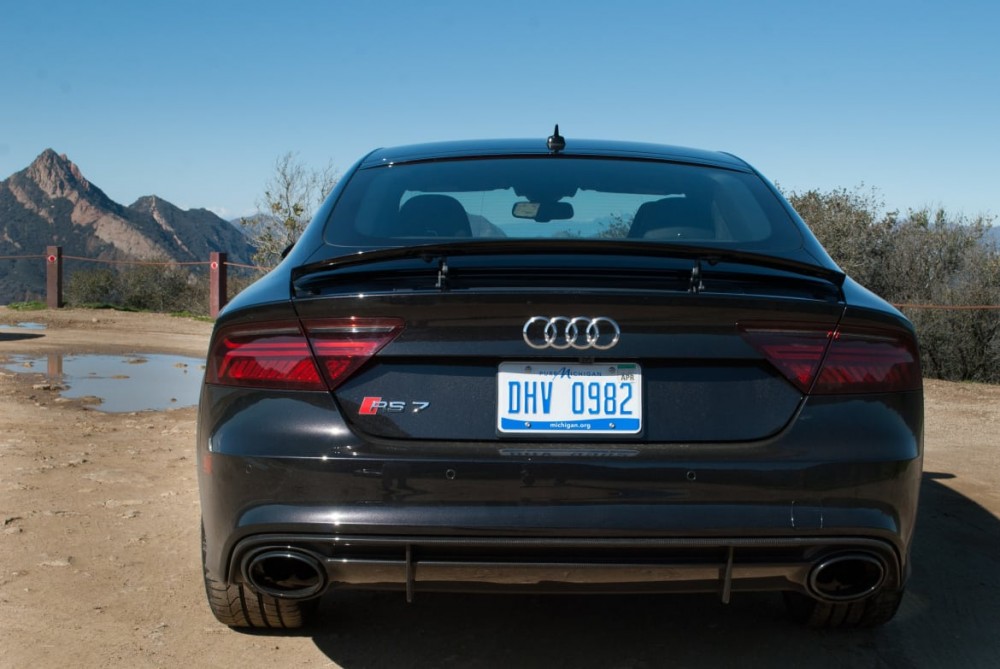
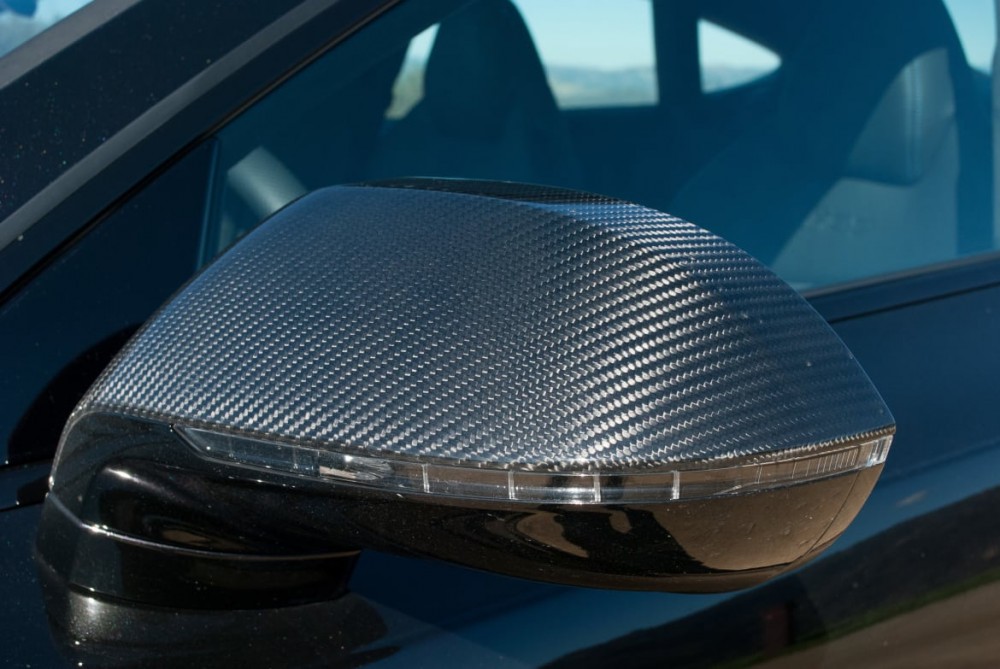
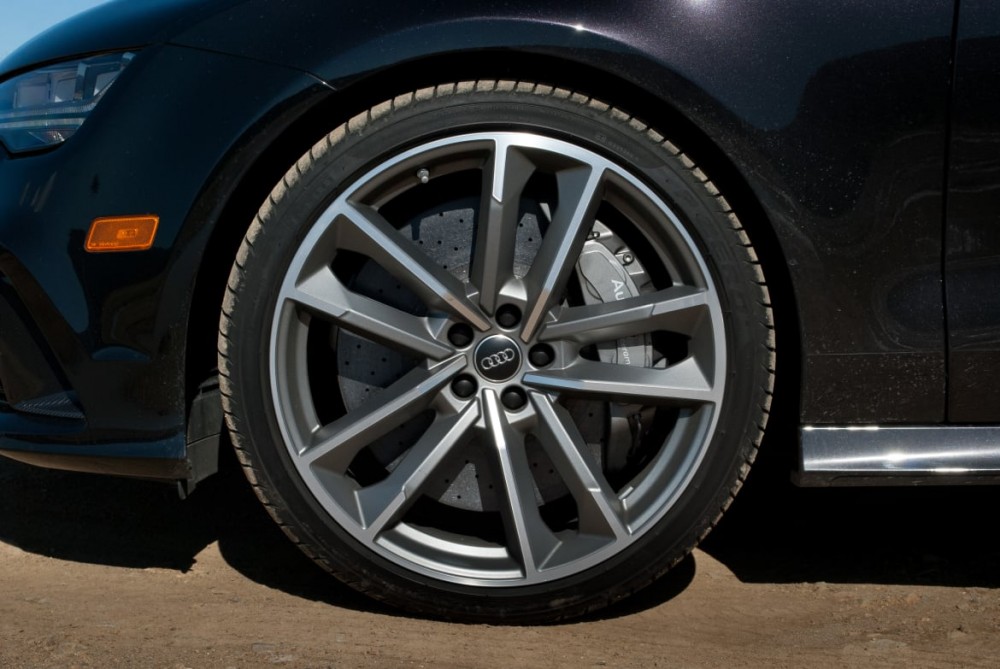
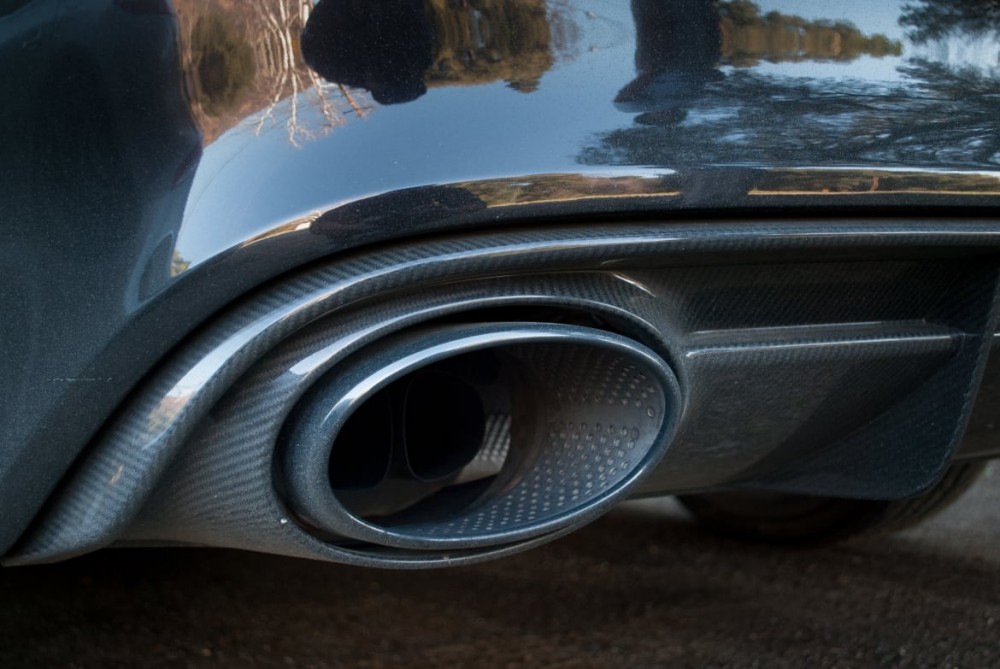
From afar, the RS 7 keeps a low profile; it's only when you get up close that it becomes apparent this is no "normal" A7.
The RS 7's grille is larger and flanked by large air inlets on the lower portion of the bumper. The car is also distinguished by full LED headlights and taillights, oval exhaust outlets and larger side sills. The Performance trim level takes the aggressive aesthetic even further, with a rear diffuser, black tailpipes, carbon-fiber housings for the side mirrors, and a gloss-black grille with a mesh pattern that continues over the air inlets.
The styling of the A7 has always been a favorite of mine; it stands out against the more symmetrical proportions of Audi's other sedans. So it's no surprise that I really like the look of the RS 7, as well. It's understated in a luxurious way, with small hints about its true nature — that of a beast.
Serious Speed
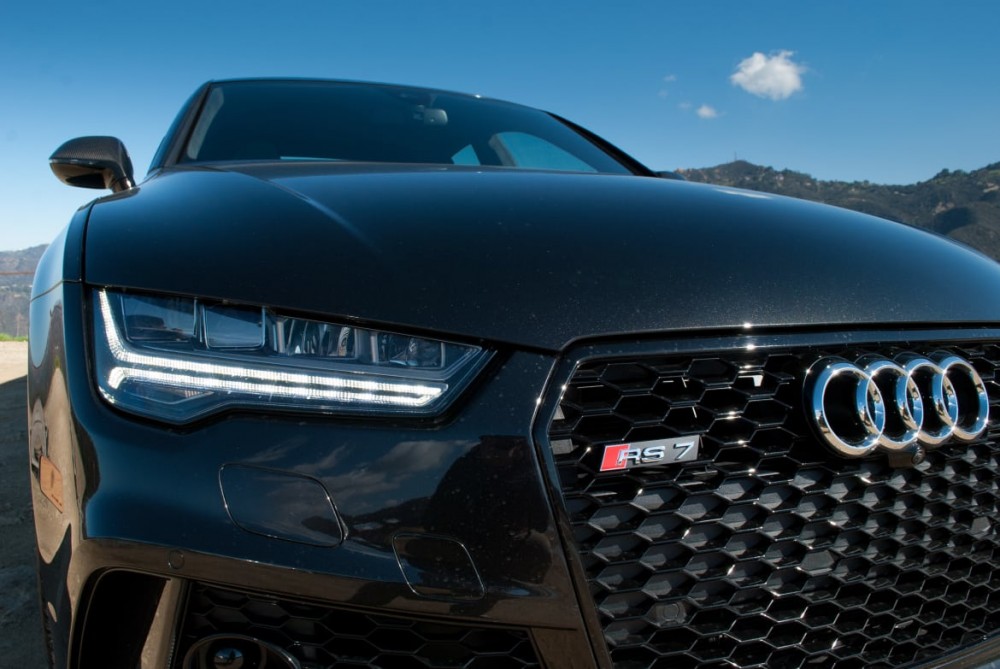
The RS 7 is blisteringly fast. It starts with the engine: a twin-turbocharged 4.0-liter V-8. In standard RS 7 models, it makes 560 horsepower and 516 pounds-feet of torque. That figure jumps to 605 hp in the RS 7 Performance, which also adds an overboost function that can temporarily bump torque output to 553 pounds-feet for even more acceleration.
An eight-speed automatic transmission with paddle shifters is standard, as is all-wheel drive with a rear sport differential that allows torque to move from left to right when slippage is detected.
That extra horsepower doesn't shave a lot off the car's zero-to-60-mph time, though: Regular RS 7 models make the sprint in 3.7 seconds, while the Performance does it in 3.6, according to Audi. The Performance's top speed does bump up to 190 mph, versus 174 mph in the standard RS 7, but I didn't get anywhere near those speeds in my week of testing on public roads.
The RS 7 isn’t small; it has a curb weight of nearly 4,500 pounds and a pretty big footprint. But the engine moves it along like it’s made of paper, with effortless acceleration from any speed. It’s seriously addicting.
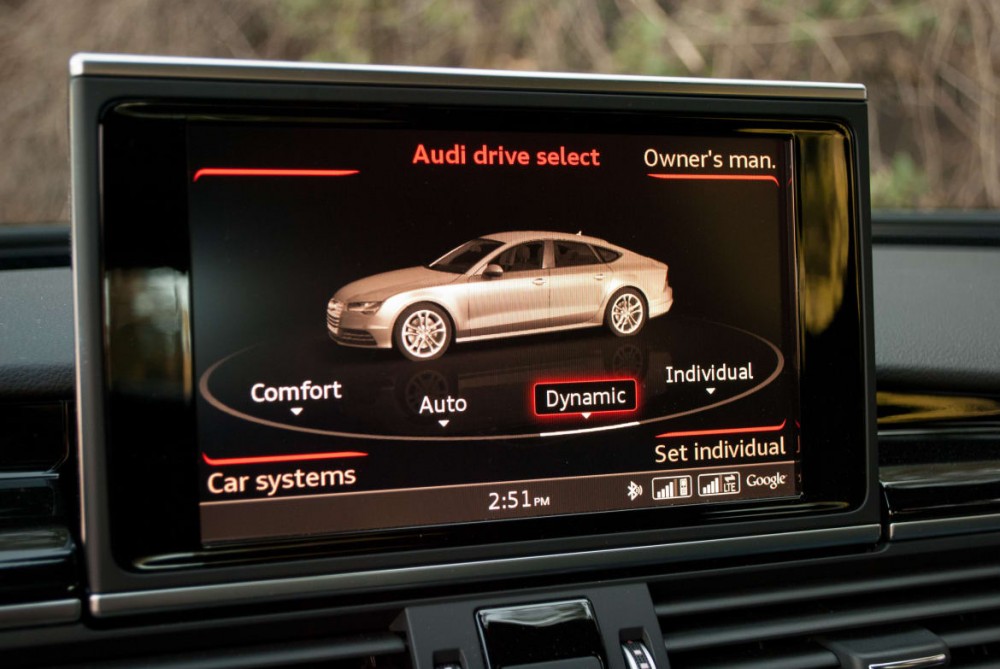
Press the accelerator slightly and the RS 7 remains pretty docile; even with all that power, it's easy to drive slowly on the street. Tilt the pedal past a certain point, however, and the world turns instantly blurry — the sheer acceleration this car is capable of is shocking.
The RS 7 isn't small; it has a curb weight of nearly 4,500 pounds and a pretty big footprint. But the engine moves it along like it's made of paper, with effortless acceleration from any speed. It's seriously addicting.
The sport exhaust that comes on RS 7 Performance models is incredible. It spits and crackles on shifts, roars when accelerating and causes general mayhem anywhere above 3,000 rpm. Whenever I found a tunnel or underpass, I cranked the RS 7 into sport mode, dropped all four windows and rousted the dead. I loved it.
Beyond Acceleration
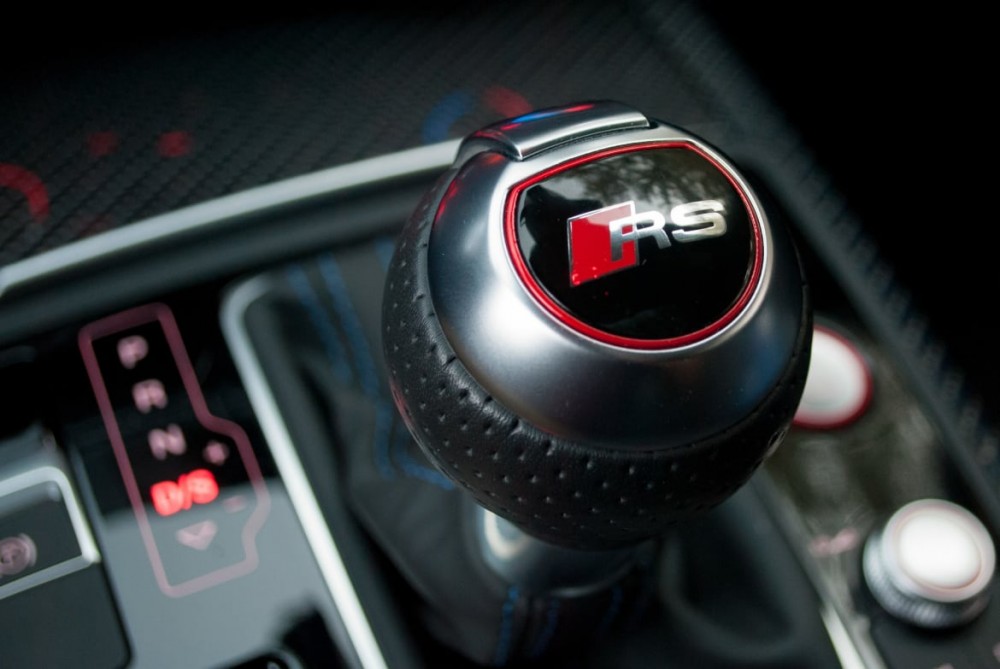
The RS 7 Performance adds two components that aid the driving experience in ways besides power. Carbon-ceramic brakes are standard, adding needed stopping power to this monster. Also standard is Audi's Dynamic Ride Control system, which helps keep the RS 7 from being a one-trick pony: it's not just fast, it has agile handling to match. In contrast to other performance cars' electronically controlled adaptive shock absorbers, Dynamic Ride Control is a fully mechanical system. It works by joining the shock absorbers at opposite corners of the RS 7 through central valves. Those valves control the flow of oil from one shock to the other, and by doing so help create counterforce that keeps the RS 7 flatter when cornering, accelerating and braking.
Though this is an older system than modern adaptive suspensions, it still works wonders. The RS 7 may be a heavy car, but it doesn't drive like one. All that power is more than enough to make it feel quick off the line, and it's incredibly stable in corners, removing much of the body roll that would unsettle the car laterally.
Fuel economy is predictably poor at 15/25/18 mpg city/highway/combined on required premium fuel. This is midpack among competitors. The BMW M6 Gran Coupe is 2 mpg worse in combined driving, and the Porsche Panamera Turbo is 3 mpg better.
Interior and Technology
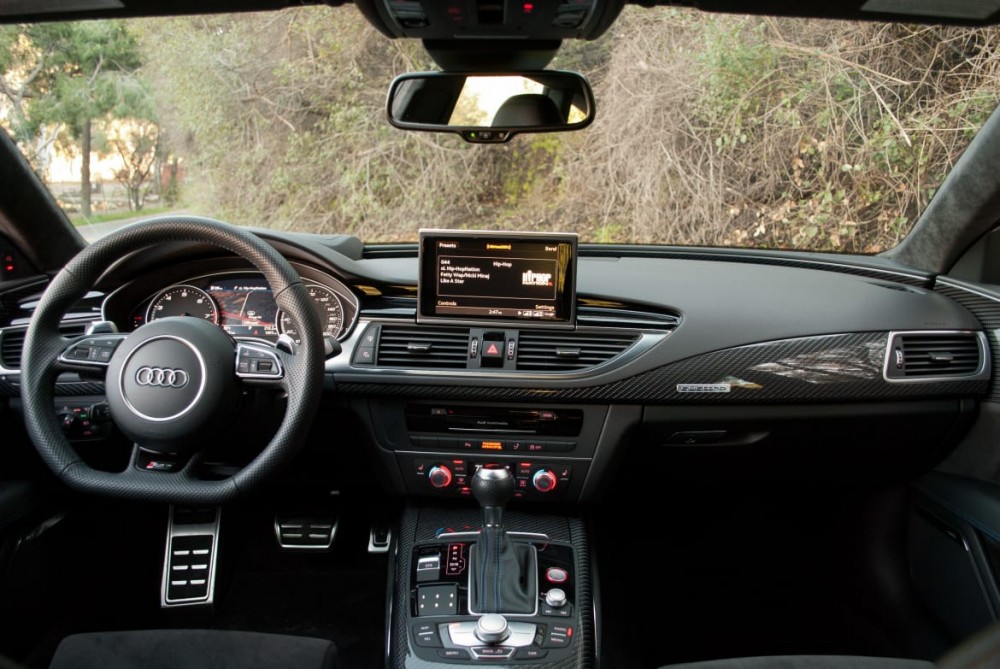
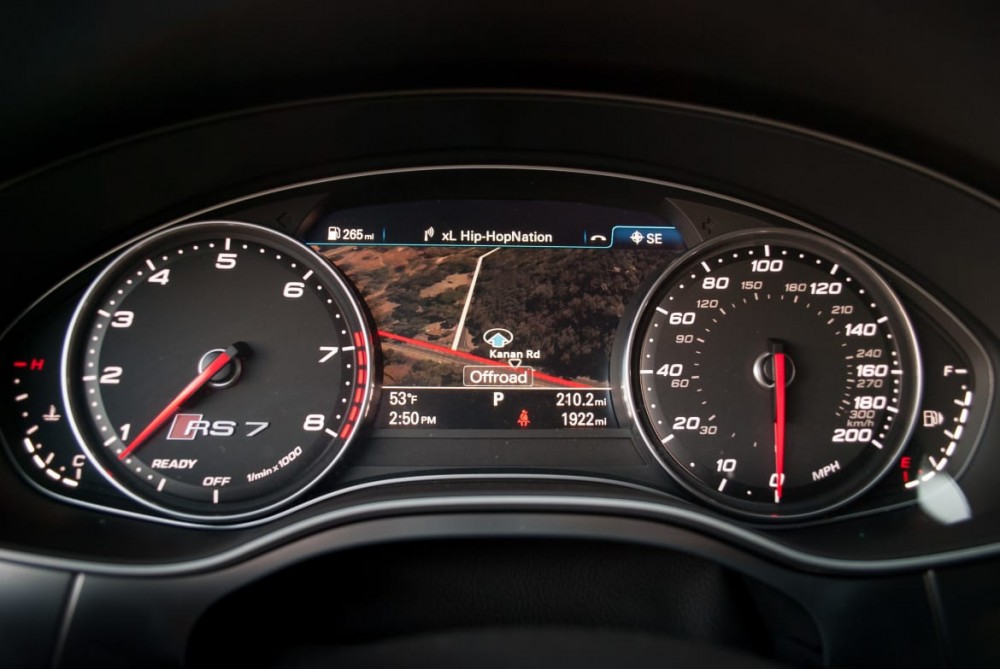
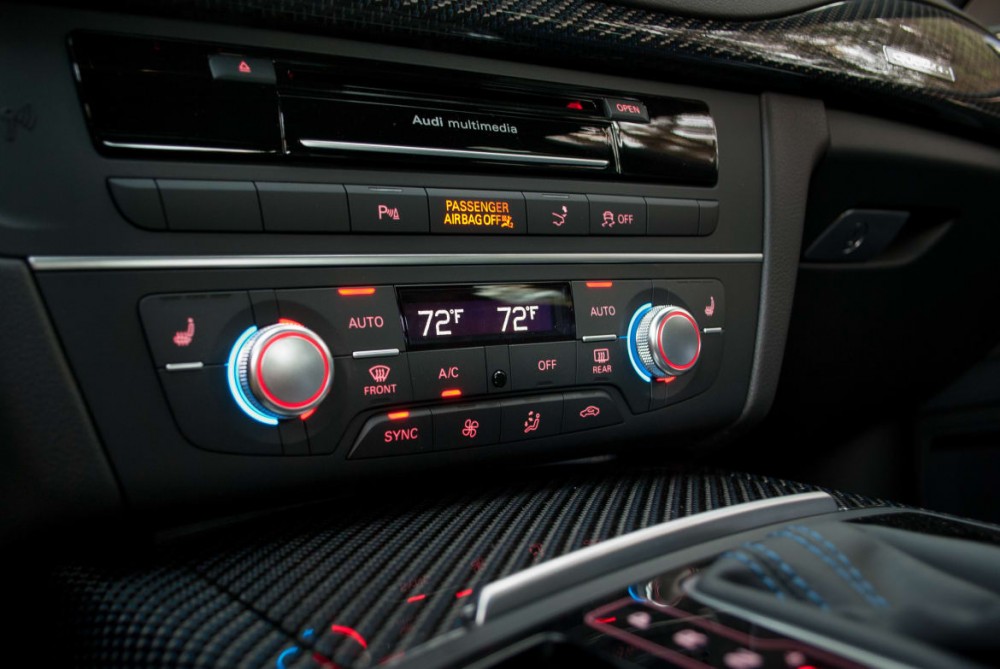
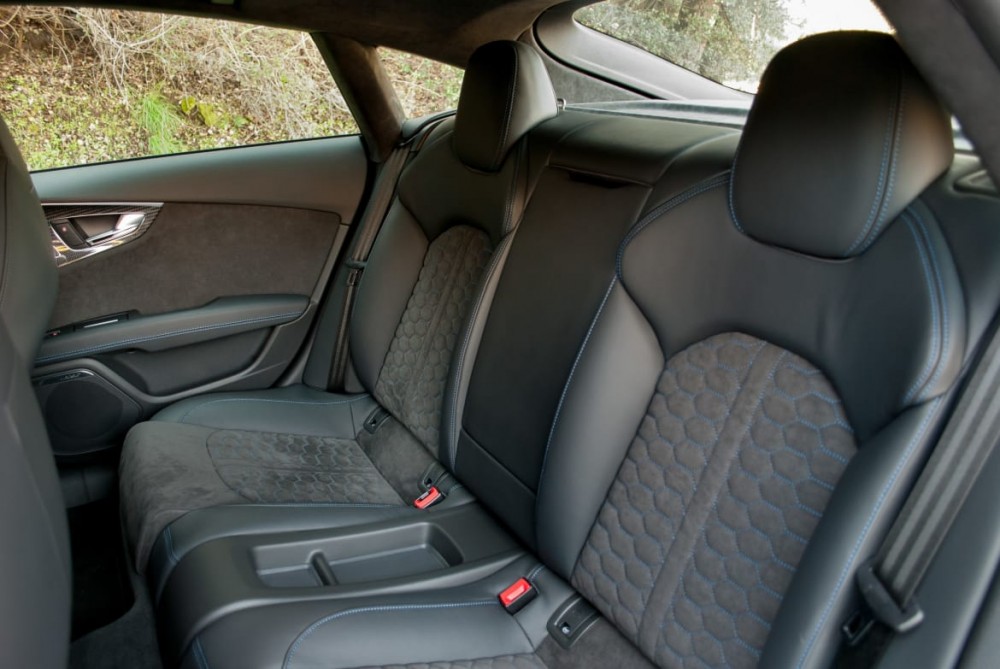
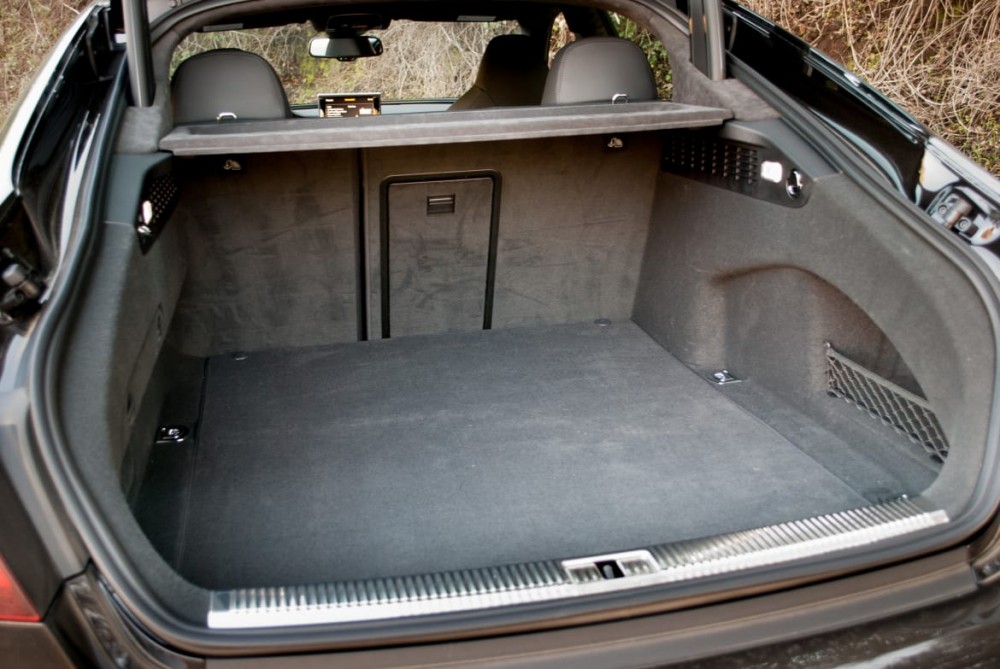
The RS 7's interior is very close to the A7 in design and layout, even coming with most of the same standard features, including four-zone automatic climate control, navigation, front and rear parking sensors, and heated front seats, though the RS 7 has four seats rather than five.
Materials and ergonomics are excellent, especially in the RS 7 Performance. That car adds sport seats that — as seen in my test car — can be covered in optional black Valcona leather and Alcantara, with honeycomb blue stitching and carbon-fiber inlays with blue accents. I found them to be more comfortable and accommodating than most sport seats, while providing enough bolstering to keep you secure during enthusiastic driving.
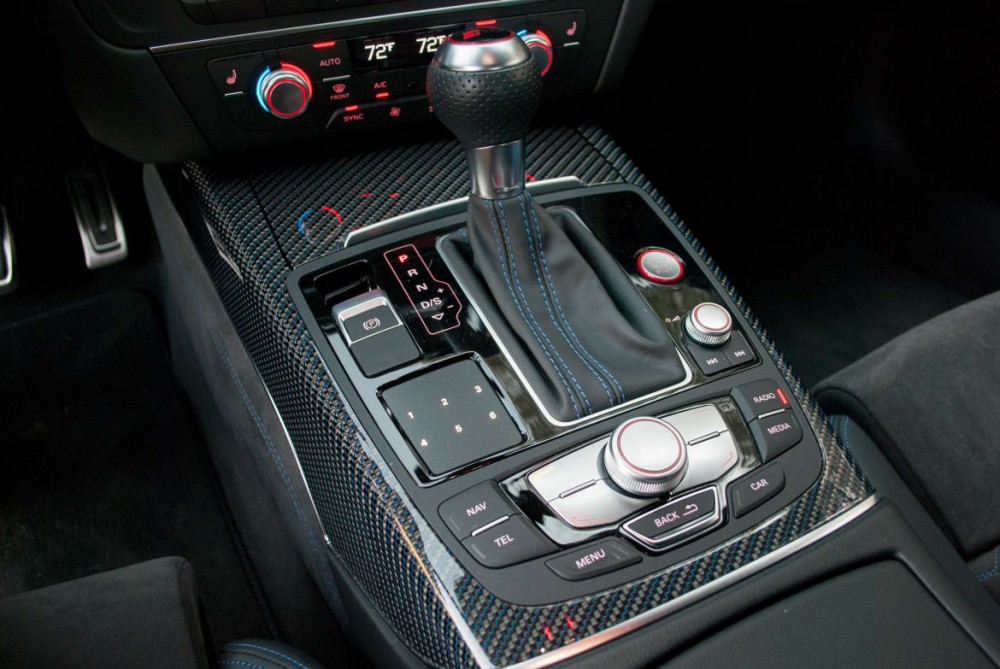
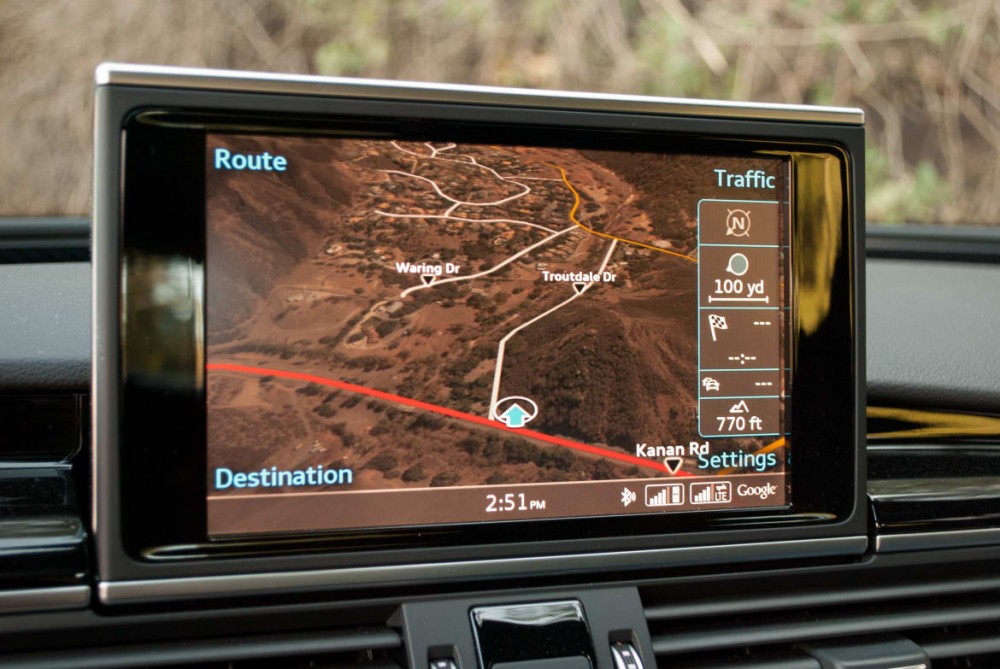
Audi's multimedia system comes with standard support for Android Auto and Apple CarPlay, but there's a caveat to using them. Due to the screen's placement high on the dash, it's not a touchscreen — all inputs to the multimedia system come through a rotary knob controller between the front seats. Both Android Auto and Apple CarPlay are designed with touchscreens in mind, and using them with a physical controller is cumbersome. In Android Auto, I was unable to access a few functions within supported apps like Spotify and Google Maps that I use regularly.
If I had one more nit to pick with the RS 7, it would be on the safety front, where many driver assistance features — such as adaptive cruise control with stop and go, lane keep assist and a corner view camera system — are optional. On a car that starts north of six figures, it feels a bit cheap.
Conclusion
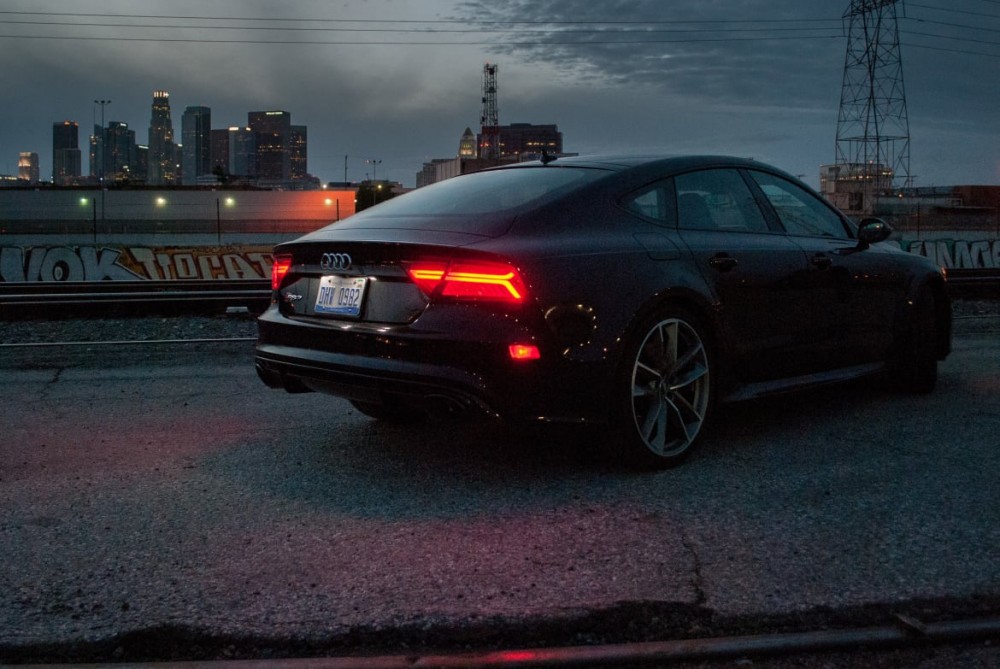
Parting with the 2017 RS 7 had no sweetness to it, just sorrow. My initial skepticism about it began melting the first time I hit the accelerator, and within a few hours, it was gone completely. The speed in this car is addicting, and the suspension keeps it balanced and stable even during rapid acceleration. Some might crave styling that hints more at the car's performance potential, but I like it as it is.








